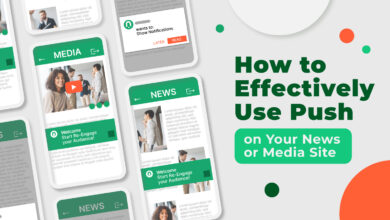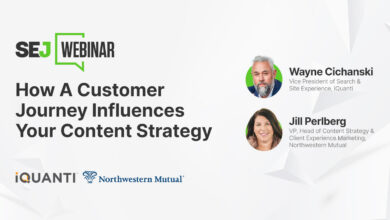How To Use Content Marketing For Customer Retention & Loyalty

As marketers, we sometimes get so caught up in attracting new customers that we lose sight of what is right in front of us – an already existing customer base interested in our products and services.
In fact, we should focus on retaining the customers that we have.
But how do you build a content marketing strategy that will help you connect with these customers on a deeper level?
Consistently post high quality content
Your website should be a living, breathing entity. Every update you make to your site plays a role in its interaction with both search engines and customers.
The more new content you provide, the more value you add to your users’ experience, which in turn will keep them coming back for more.
Fortunately, frequent content updates don’t necessarily have to come in the form of blog posts and newsletters.
Feel free to diversify your content offering with FAQs, product demos, how-to guides, vlogs, and podcasts.
Of course, posting content consistently is easier said than done. Here are some strategies to consider if you want to keep your content fresh and up to date:
- Set aside time each week to Create some content. Sticking to a schedule can make all the difference.
- Brainstorm 10 to 20 topics at a time So you can start writing without having to brainstorm new topics every time you want to release another piece of content.
- Whenever possible, you should Always reuse your content to other popular formats. Break down stats, view unexpected results, and review your research in newsletters and videos. This way, you will be able to make an asset go a long way.
Take advantage of customer intelligence
Customer data provides information about customer activity that occurred at a specific time and point of contact. Customer intelligence takes it one step further. These are the insights that come from collecting and analyzing customer data across every part of the customer journey.
To begin this process, you will need to build customer personas for the slide decks. Next, analyze each group.
User analytics provides a steady stream of data that guides your content marketing. Metadata, interaction, behavioral, and attitudinal data, in particular, will help you define, profile, categorize, and track customer experience.
Each touchpoint presents businesses with an opportunity to better understand consumer needs and deliver a more personalized experience.
Create a customer communications calendar
Even if your customers don’t pass on their feedback to you, your content marketing team must be proactive in reaching them directly.
Consider creating a communications calendar to better manage customer engagement opportunities for upselling and cross-selling.
The basic concept of a contact calendar is fairly simple – it’s a chart that tracks customer communications. It tells you when a customer last contacted you and notifies you when they haven’t interacted with your brand.
Having this information on hand makes it easy to launch promotions and customer service features that remove barriers long before customers even know they’re there.
Social media posts to encourage community building
Social media posts make for excellent retention content.
From tips and quick videos to new products and feature releases, social media is a resource that can be used to connect with customers and keep them engaged.
Relationships are a two-way street, which is why brands need to listen and connect with their audience to cultivate a meaningful relationship.
This can be achieved by running contests, asking direct questions, conducting surveys, and sharing survey results.
Additionally, consider using other community-building techniques via forum-like groups and channels such as Facebook groups, Reddit, Discord, LinkedIn, and Twitter.
Focus on the customer life cycle
In the context of content marketing, it is important to attract and retain customers beyond the initial impulse purchase.
That’s why it’s important to create content around each stage of the buyer’s journey.
For a comprehensive editorial plan, here are some key communication methods to consider:
consciousness
- Public relations.
- Advertising.
- Social media marketing.
- Email marketing.
- blogging.
consideration
- Marketing research.
- Advertising.
- Social media.
- Webinars.
- Product/service reviews.
- blogging.
Buy
- website.
- E-commerce marketing.
service
- Social media.
- live chat.
- Email marketing.
- Marketing research.
loyalty
- Email newsletters.
- Webinars.
- blog or note.
- Forum on the social network.
Help + Resource Center + Customer Feedback
Asking for feedback is one of the best ways to keep your community at the center of everything you do.
After all, nothing resonates with clients like compelling stories about people like them who encountered and solved similar—if not identical—problems.
If you want to make your customers feel heard, show them that you care about them, not their business.
It’s also a good idea to turn your product or service into an original brand story. This will make it more attractive and interactive.
To maximize the success of your brand story, you’ll need to address your customers’ pain points. Share social proof in the form of testimonials, case studies, and press mentions.
Even hosting events like webinars and online workshops for consumers can help establish expertise and strengthen credibility.
Send interactive emails
The first time someone uses your product or service is a very important milestone in the customer journey.
Much attention to detail is paid to determining how customers will be onboarded.
Keep in mind that your customers’ needs can change once they start using your product or service.
To stay ahead of the curve, be proactive and incorporate images, links, animations, and discounts into every email. Adapt your offerings whenever possible.
The preparation process takes place at the beginning of the journey. It lays the foundation for the relationship with your customers.
Be everywhere your customers are
There is no getting around it. Businesses in all respects are going full throttle towards digital.
However, your customers are already there. They discover products on social media and leave reviews on their phones.
From YouTube to LinkedIn, you need to strive for an omnipresence to get the most out of your marketing dollars.
The more mediums you broadcast your message in, the higher your chances of capturing the attention of your target audience and converting them into repeat customers.
Personalize, personalize, personalize
The larger your company, the more difficult it is to portray your brand as authentic.
No customer journey is the same. Offering a personalized experience can help you engage with your audience on a more personal level.
You can address customers by their first name in an email, segment contact lists, and respond to comments on social media.
Implement improvements quickly and announce those changes with content
Responding to customer feedback in a timely manner will grow your brand in many ways.
First, you are letting your customers know that you understand their pain points. Simply sharing empathy will go a long way in customer retention.
Second, it comes across as a company that actively listens to its target audience and is just as receptive to positive feedback as it is to critical feedback.
Third, you position yourself as a brand that takes action.
Final thoughts on content marketing
Remember – your customers always have the option to jump ship.
Don’t let them turn into your competitors.
Build trust with your audience by creating and publishing quality content across all channels. Over time, you will accumulate a following of brand loyalists who will stick with your company for the long term.
And you have your content marketing strategy to thank for that.
More resources:
- How to integrate content marketing and search engine optimization
- Top 10 business benefits of content marketing
- Content Marketing: The Ultimate Guide for Beginners
Featured image: single image / Shutterstock

![Creative Intelligence And Its Role In Online Advertising [Podcast]](https://altwhed.com/wp-content/uploads/2023/01/Creative-Intelligence-And-Its-Role-In-Online-Advertising-Podcast-390x220.jpg)


